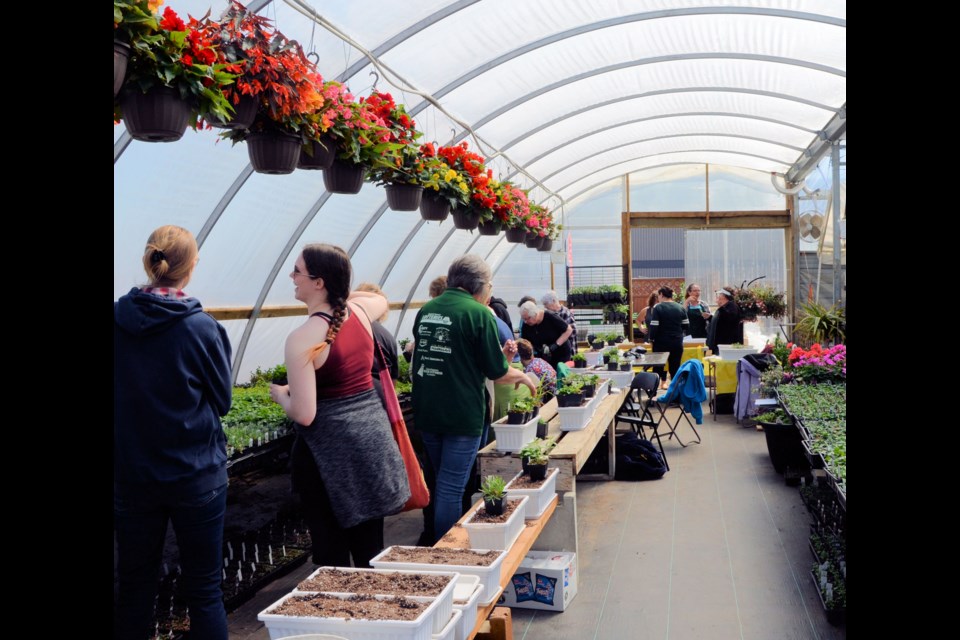UNITY — More than a dozen women gathered at Hollyhock’s Greenhouse in Unity April 26 to enjoy – and learn about – teas made from herbs which you can grow in your garden, even in Saskatchewan.
The gardening workshop was one of five organized and partially funded by the Saskatchewan Senior Fitness Association Rivers West District, with the other workshops taking place on various dates at other locally owned greenhouses in Kindersley, Maidstone, St. Walburg and Battleford.
Hollyhock’s owner Tammy Lauinger introduced the first tea – pineapple mint – discussing the anecdotal evidence suggesting the tea can have anti-inflammatory properties and other physical benefits. She compared it to most other herbal teas, which are more often recommended for their effect on mental and emotional states.
Beautiful tea cups and saucers – borrowed from Parkview Place, who received them from the family of the late Donna Uzelman – were passed out and half-cups of tea poured so everyone could try the pineapple mint tea.
While the guests enjoyed each tea, Lauinger introduced the next tea to be sampled, speaking about its perceived benefits, growth habits and suggested steeping times, all of which varied depending on the herb in question.
Other teas created from herbs grown in the greenhouse and sampled that morning included regular peppermint, chocolate mint and lemon verbena, the latter definitely being a favourite for several attendees. An additional tidbit of information was that lemon verbena can be overwintered as a houseplant.
One general instruction given was to never cut off more than 25 per cent of the leaves and stems at a time. Drying can be done in a warm, dry place for several days, or in a 170-degree oven on cookie sheets for about two hours.
A “sleepy-time” tea, a blend of different herbs created by Gloria from the Scott Colony, was also tried, and each guest went home with a sample of Gloria’s Peaceful Nights tea, sold along with a number of other tea blends under the brand name Bell’s Hill Tea.
While waiting for one of the teas to steep, Lauinger took the opportunity to speak about the use of beneficial “bugs” in the greenhouse. Sachets of carnivorous thrips could be seen hanging in various spots. Those thrips eat the other plant-attacking thrips.
She gave other examples of how, at Hollyhock’s, pest insects and even diseases are controlled through biologically friendly methods. For example, although most herbs were on the shelves in alphabetical order, a rack of sage plants was out of place. It was near a doorway which was open to the outside as increased air circulation helps prevent powdery mildew.
Lauinger, who is president of the Saskatchewan Greenhouse Growers Association, said there is a big movement among greenhouses in Saskatchewan to move from chemicals to beneficial insects. Doing so means, for example at Hollyhock’s, there have been no chemicals used on the herbs which you want to grow and eventually use in your food and/or for tea.
Those attending the tea workshop came from as far afield as Cut Knife, Rock Haven and Battleford as well as from Unity.




